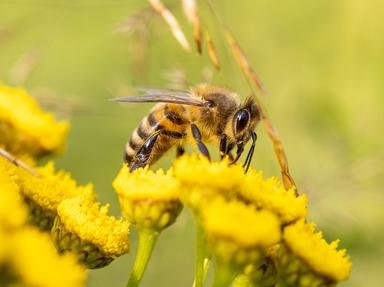Quiz Answer Key and Fun Facts
1. All honey bees belong to which genus?
2. All honey bees can sting.
3. When a honey bee stings, why does it die shortly after?
4. Why are bees good for the environment?
5. How does a colony acquire a queen bee?
6. How many eggs does the queen lay a day?
7. What is the role of male honey bees?
8. There are many threats to our honey bees. Which of the following is NOT a threat?
9. Honeybees are considered to be very intelligent.
10. Do honey bees have a caste system in the hives?
Source: Author
Trufflesss
This quiz was reviewed by FunTrivia editor
rossian before going online.
Any errors found in FunTrivia content are routinely corrected through our feedback system.
